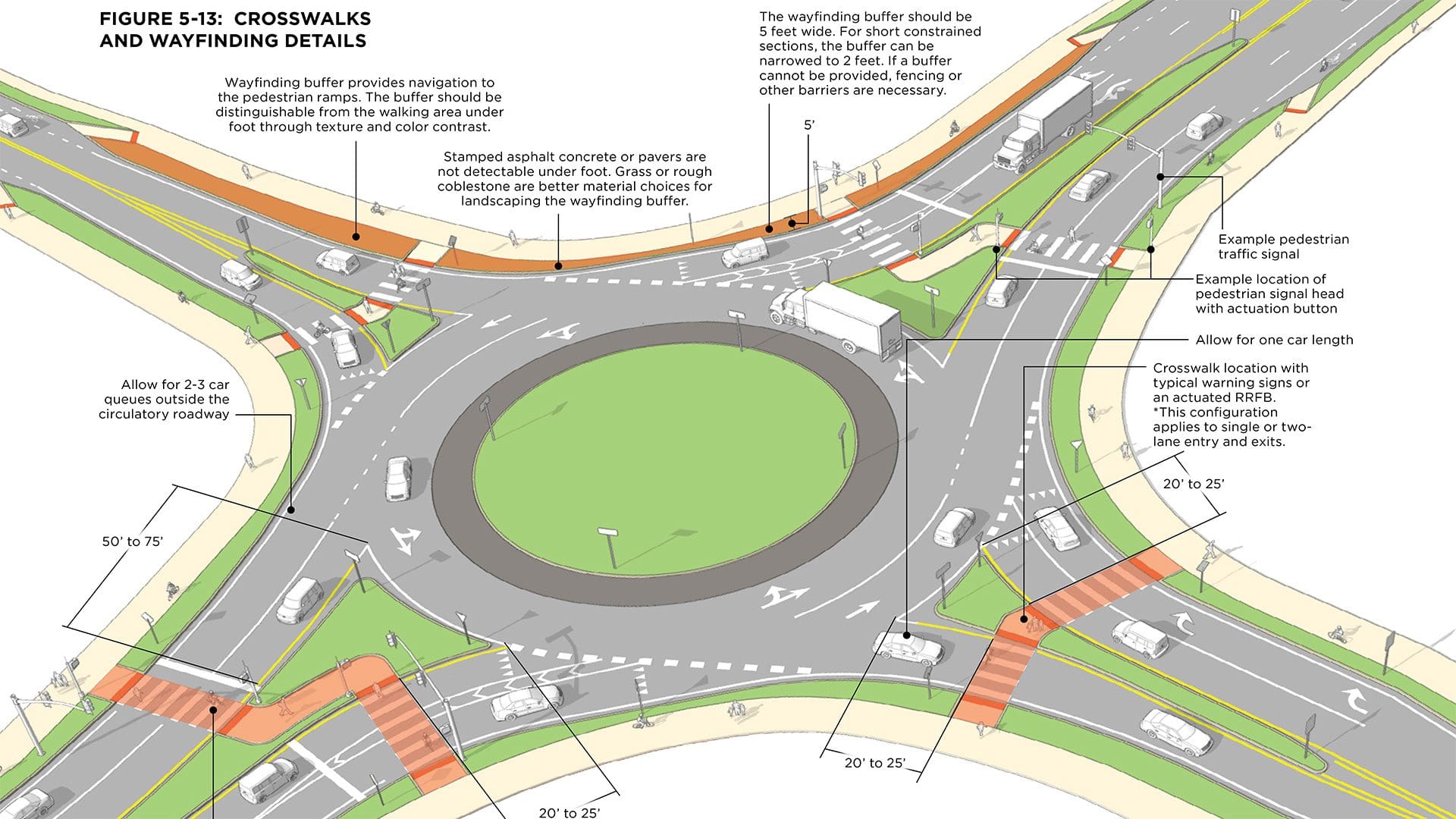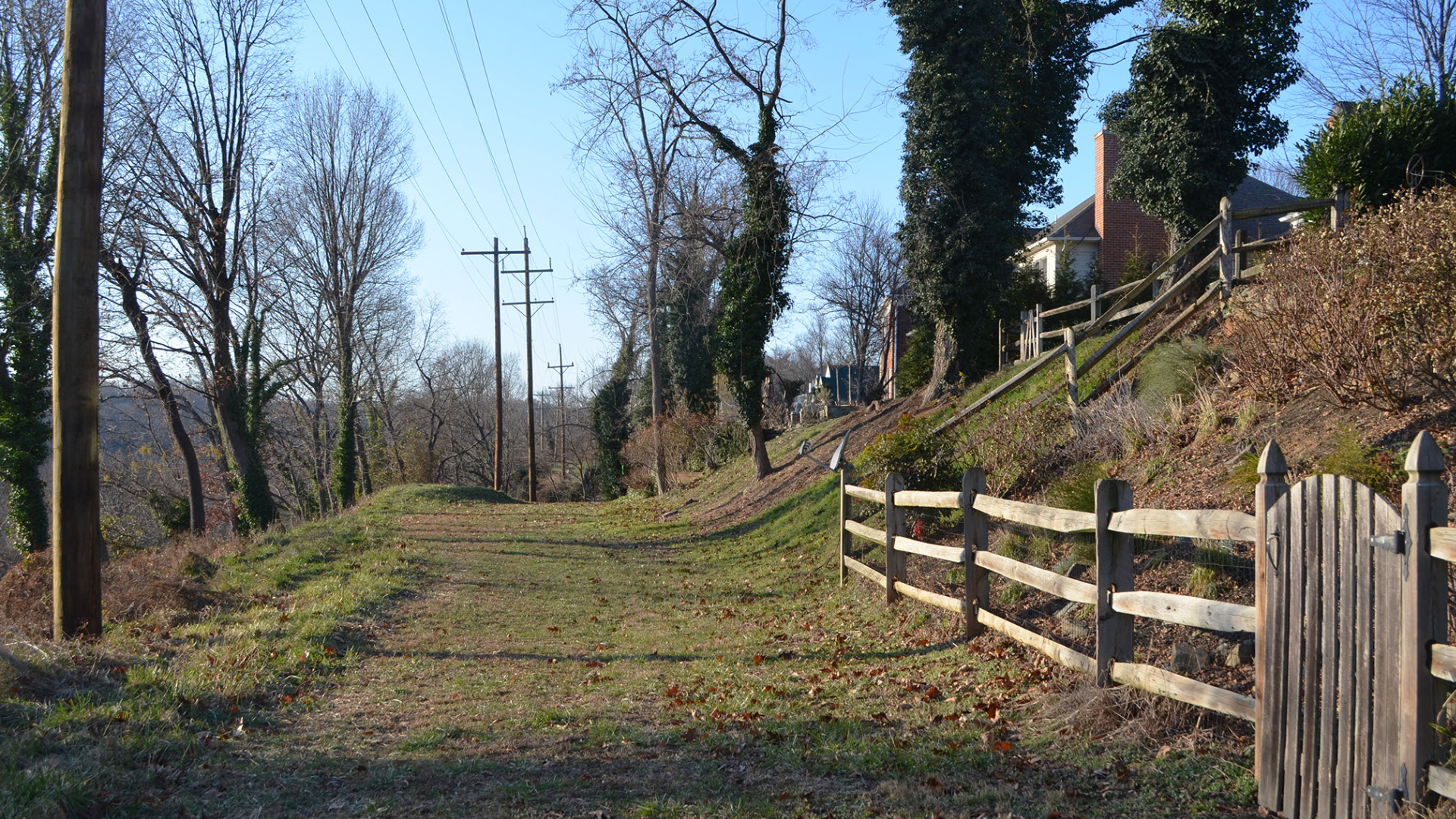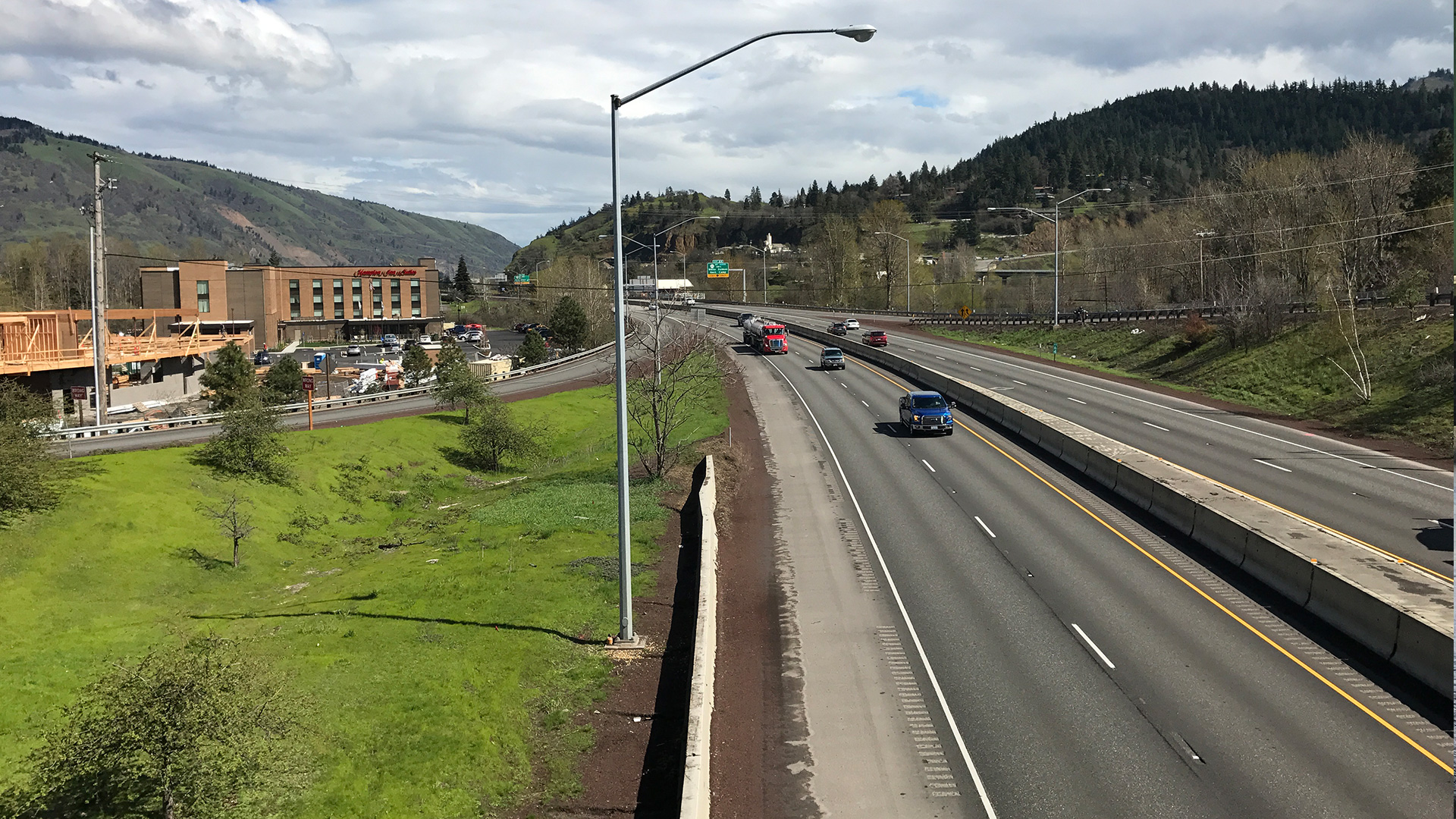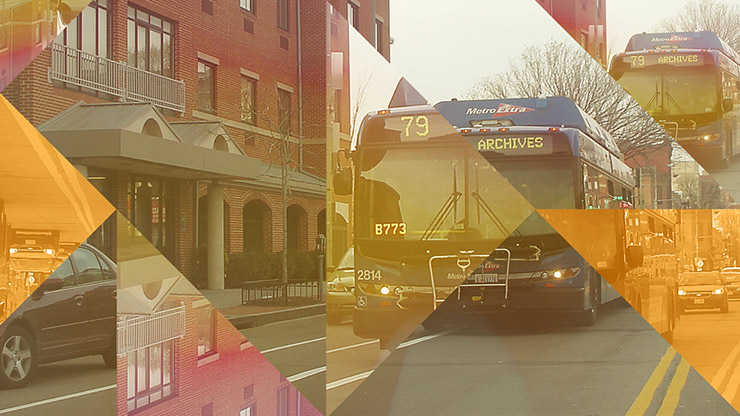Challenge
Since NCHRP Report 672 (Roundabouts, An Informational Guide, 2nd Edition) was published, the roundabout practice has advanced substantially, and the findings from other research projects have been published related to designing for trucks and oversize loads, designing for people walking and biking, and accessibility considerations, such as designing for pedestrians with visual impairments.
The Massachusetts Department of Transportation (MassDOT) was looking to develop a guide that compiles current best practices and serves as a user-friendly resource for MassDOT staff and practitioners designing roundabouts with simple layouts as well as roundabouts with more complex designs.
Solution
Kittelson worked with MassDOT to create a roundabout guide that draws NCHRP Report 672 as well as other recent guidance for multimodal and accessibility considerations.
Because of the level of detail contained in these reports and documents, our project team developed original three-dimensional graphics to help MassDOT staff and practitioners not only visualize the concepts but also understand the perspectives of different roundabout users. A 3D graphic can at once convey the scale, location, and probable movements of trucks and pedestrians in a roundabout, whereas a research document might take pages of text to communicate the same scenario.
In addition, because the graphics were developed to convey the best available guidance, MassDOT staff and practitioners using this guide would not be misled by less-than-ideal examples in the built environment.

The Outcome
A Guide That's Changing the Way We See Roundabouts
By synthesizing current roundabout guidance through a highly visual presentation, the MassDOT Guidelines for the Planning and Design of Roundabouts is a unique resource for DOT staff and practitioners, as well as for educational purposes on a national level.



